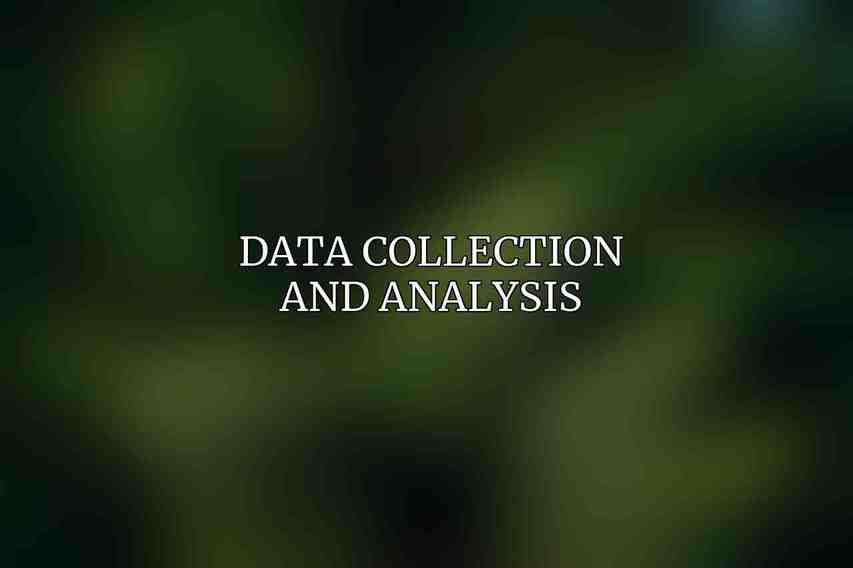Data reporting plays a vital role in conveying meaningful insights from complex datasets to decision-makers and stakeholders. An engaging data report not only presents information but also provides actionable recommendations based on thorough analysis. Understanding the audience and purpose of the report is fundamental to effectively communicate findings.
Data Collection and Analysis

When embarking on writing a data report, the first steps involve collecting and analyzing relevant data. This process is crucial as it forms the foundation of the entire report.
Data Sources and Methods
Utilizing credible data sources and appropriate methodologies is key to producing reliable insights. Incorporating diverse data sets from reputable sources enhances the validity of your findings.
Data Cleaning and Preparation
Before analysis, ensuring data cleanliness and integrity is essential. Data cleaning involves removing errors, duplicates, and inconsistencies to enhance the accuracy of the report.
Exploratory Data Analysis and Key Findings
Conducting exploratory data analysis helps in discovering patterns, trends, and outliers within the data. Identifying key findings early on guides the direction of the report and highlights essential insights for discussion.
Report Structure
Organizing your data report in a structured manner enhances its readability and clarity. A well-structured report includes key sections that guide the reader through the information effectively.
Executive Summary
The executive summary provides a concise overview of the entire report, including key insights, implications, and actionable points for decision-makers.
Key Insights and Implications
Summarizing the main findings and their implications on the business or topic at hand is crucial for decision-makers to grasp the significance of the data.
Action Points
Listing actionable steps based on the findings allows stakeholders to implement changes or strategies effectively.
The introduction sets the stage by providing background information, context, objectives, and the scope of the report.
Background and Context
Offering a brief overview of the subject matter and why the report is being conducted helps readers understand the relevance of the findings.
Objectives and Scope
Defining the objectives and scope of the report outlines what the analysis aims to achieve and the boundaries within which the findings are interpreted.
Methodology
Detailing the data sources, methods utilized for analysis, and data analysis techniques establishes the credibility and transparency of the report.
Data Sources and Methods
Explaining the origin and reliability of the data used in the report assists in building trust with the audience.
Data Analysis Techniques
Describing the analytical methods employed helps in understanding how the conclusions were drawn from the data.
Results and Findings
Presenting the results through visualizations such as charts, graphs, and tables aids in conveying complex information in an easy-to-understand format. Statistical analysis and interpretation provide the necessary context to the findings.
Visualizations (Charts, Graphs, Tables)
Choosing appropriate visual aids enhances the presentation of data and helps in emphasizing key points effectively.
Statistical Analysis and Interpretation
Explaining the statistical methods used and interpreting the results in a meaningful way assists readers in grasping the significance of the findings.
Discussion
The discussion section provides an interpretation of the findings, addresses any limitations, and suggests future directions for research or action.
Interpretation of Findings
Analyzing and explaining the implications of the results helps in drawing meaningful conclusions from the data.
Limitations and Future Directions
Acknowledging the limitations of the study and proposing avenues for future research widens the scope of the report and invites further exploration.
Summarizing the key findings and presenting actionable recommendations and an implementation plan rounds up the report effectively.
Summary of Key Findings
Recapitulating the main discoveries reinforces their importance and ensures they are not overlooked.
Recommendations and Action Plan
Outlining clear recommendations based on the findings and providing an actionable plan helps in driving change and decision-making.
Writing Style and Presentation

The way information is conveyed in a data report plays a significant role in engaging the audience and facilitating comprehension.
Clear and Concise Language
Using clear and concise language ensures that the information is easily understood by a variety of readers, regardless of their familiarity with the subject matter. Read more about this on Real-World Successes: Reporting Best Practices Case Studies
Active Voice and First Person
Employing an active voice and the first-person perspective helps in making the report more engaging and enhances the clarity of the message being conveyed.
Formatting and Design
The formatting and design elements of a data report contribute to its overall aesthetic appeal and readability.
Headings and Subheadings
Organizing the content with descriptive headings and subheadings helps in guiding the reader through the report and locating specific information efficiently.
Font Selection and Size
Choosing appropriate fonts and sizes for text contributes to the visual appeal and readability of the report.
Color and Visuals
Utilizing a color scheme that is visually appealing and incorporating relevant visuals enhance the overall presentation of the report.
Storytelling and Visualization
Crafting a narrative using data and effectively using charts and graphs to illustrate key points engages readers and aids in better comprehension of complex information.
Using Data to Tell a Narrative
Creating a coherent storyline with data helps in making the findings more compelling and relatable to the audience.
Effective Use of Charts and Graphs
Selecting the right type of charts and graphs to represent data visually can significantly enhance the clarity and impact of the information being conveyed.
Engagement and Impact
Ensuring that the data report is engaging and impactful involves focusing on interactivity, customization, and actionability.
Interactivity and Visualization
Integrating interactive elements such as dashboards and online tools in the report enhances user engagement and facilitates a deeper exploration of the data.
Audience Engagement
Customizing reports to meet specific audience needs and providing background context ensures that the information is tailored to the reader’s requirements and enhances engagement.
Actionability
Identifying key recommendations and offering clear guidance on their implementation empowers stakeholders to take necessary actions based on the findings presented in the report.
Continuous Improvement
To ensure the longevity and relevance of a data report, continuous monitoring, evaluation, and refinement are essential.
Monitoring and Evaluation
Tracking the usage and impact of the report, as well as gathering feedback from stakeholders, provides insights into areas for improvement and allows for adjustments to be made accordingly.
Data Updates and Iterations
Incorporating new data and insights into subsequent versions of the report ensures that the information presented remains current and relevant. Continuous refinement based on feedback and evolving trends helps in improving the quality of future reports.
writing an engaging data report involves a systematic approach that includes thorough data collection and analysis, a well-structured report format, clear writing style, engaging presentation, focus on audience engagement and impact, and a commitment to continuous improvement. By following this step-by-step guide, you can effectively communicate complex data in a compelling and actionable manner, driving meaningful decisions and actions based on data-driven insights.
Frequently Asked Questions
What is the importance of writing engaging data reports?
Engaging data reports are crucial for effectively communicating insights and findings to a wider audience, making the data more accessible and actionable.
How can I make my data report more visually appealing?
You can use graphs, charts, and infographics to visually represent data, making it easier for readers to comprehend complex information.
What are some tips for structuring a data report for maximum impact?
Start with a clear introduction, organize your findings logically, and use headings and subheadings to guide the reader through the report smoothly.
How do I ensure the accuracy and relevance of the data in my report?
Double-check your data sources, verify the authenticity of the information, and ensure that your analysis aligns with the objectives of the report.
What are some common pitfalls to avoid when writing a data report?
Avoid using technical jargon excessively, presenting data without context, and failing to provide actionable recommendations based on the findings.

